Once the Old Basaltic shield-building eruptions found in Anaga and Teno merged into a single massif the shield experienced two to three million years of erosion. The post-erosion phase began with a new volcanic edifice was erupting in the center of the island between 3.2 and 0.17 Ma. This second stage is known as the Cañadas succession.
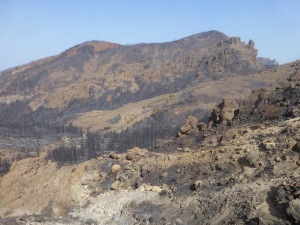 |
| The Cañadas succession adjacent to crater rim |
 |
| Crater rim and Cañadas succession (left) and crater floor |
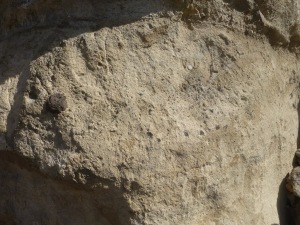 |
| Ignimbrite deposit |
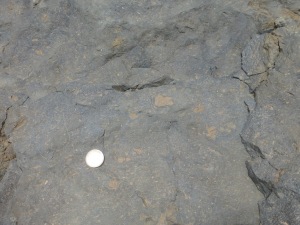 |
| Phonolite obsidian flow |
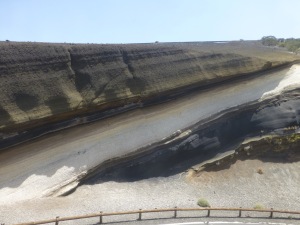 |
| Interbedded pumice and scoria fall beds |
The above interbedded scoria-pumice relationship displays the contemporaneous existence of two radically different magma sources and plumbing systems. The phonolitic pumice was sourced from fractionated magma chamber that fed periodic plinian eruptions. These eruptions are bracketed by strombolian eruptions sourced from juvenile, basaltic magma chambers. This bimodal magmatism is evidence of underplated mafic magma that melted the overlying oceanic crust producing the phonolitic lavas and occasionally these mafic magmas burst through the crust producing the cinder cones and lava flows.
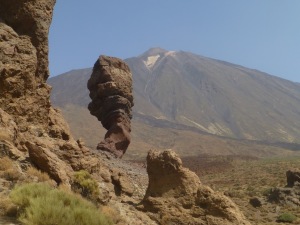 |
| Los Roques de Garcia and Mt Teide in the background |
In the Roques de Garcia, these pinnacles are made up of a volcanoclastic breccia representing an episode of gravity sliding within the Cañadas volcanic edifice. Avalanche deposits are very common in ocean island volcanos and those in the Canary Islands are some of the largest in the world. Previous gravitational instabilities have released as much as 1000 cubic kilometers of material into the ocean (Watts and Masson, 1995). Although this did not happen in one catastrophic event it is estimated that a single landslide would release energy equal to 7000 megatons of TNT and create a tsunami with 25-35 meter runup along the eastern coast of North America (Ward and Day, 2005). This is compared to the 950 megatons of TNT and average 10 meter runup (4m to 48m) of the 2004 Indonesian earthquake and tsunami.
 This work is licensed under a Creative Commons Attribution-NonCommercial-ShareAlike 4.0 International License.
This work is licensed under a Creative Commons Attribution-NonCommercial-ShareAlike 4.0 International License.






![]() This work is licensed under a Creative Commons Attribution-NonCommercial-ShareAlike 4.0 International License.
This work is licensed under a Creative Commons Attribution-NonCommercial-ShareAlike 4.0 International License.